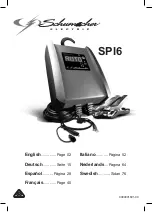
9.3.13 Input Current Limit Programming by External Components (ILIM)
The input current limit threshold is user programmable through an external resistor or through registers over
I
2
C. Set the input current limit using the ILIM pin by connecting a resistor from ILIM to GND using
for
guidance. If no ILIM resistor is connected and the pin is tied to GND, the default ILIM register value is used. The
external value is not valid once the device enters host mode.
Table 9-4. ILIM Resistor Settings
ILIM
KILIM
RILIM
(STANDARD 1%
VALUES)
UNIT
MIN
TYP
MAX
MIN
TYP
MAX
0.048469388
0.051020408
0.053571429
190
200
210
3920
Ω
0.09047619
0.095238095
0.1
190
200
210
2100
Ω
0.146153846
0.153846154
0.161538462
190
200
210
1300
Ω
0.19
0.2
0.21
190
200
210
1000
Ω
0.285714286
0.30075188
0.315789474
190
200
210
665
Ω
0.380761523
0.400801603
0.420841683
190
200
210
499
Ω
The device has register programmable input current limits from 50 mA to 400 mA in 50-mA steps. The device is
USB-IF compliant for inrush current testing, assuming that the input capacitance to the device is selected to be
small enough to prevent a violation (<10 µF), as this current is not limited.
9.3.14 Charge Current Programming by External Components (ISET)
The fast charge current is user programmable through an external resistor or through registers over I
2
C. Set the
fast charge current by connecting a resistor from ISET to GND. If no ISET resistor is connected and the pin is
tied to GND, the default ISET register value is used. While charging, if the charge current is using the externally
programmed value, the voltage at ISET reflects the actual charging current and can be used to monitor charge
current. The current out of ISET is 1/100 (±10%) of the charge current. The charge current can be calculated by
using
Table 9-5. ISET Resistor Settings
ISET
KISET
RISET
(STANDARD 1%
VALUES)
UNIT
MIN
TYP
MAX
MIN
TYP
MAX
0.285714286
0.30075188
0.315789474
190
200
210
665
Ω
0.19
0.2
0.21
190
200
210
1000
Ω
0.126666667
0.133333333
0.14
190
200
210
1500
Ω
0.095
0.1
0.105
190
200
210
2000
Ω
0.06462585
0.068027211
0.071428571
190
200
210
2940
Ω
0.048469388
0.051020408
0.053571429
190
200
210
3920
Ω
0.038076152
0.04008016
0.042084168
190
200
210
4990
Ω
0.031456954
0.033112583
0.034768212
190
200
210
6040
Ω
0.025956284
0.027322404
0.028688525
190
200
210
7320
Ω
0.019
0.02
0.021
190
200
210
10000
Ω
0.012666667
0.013333333
0.014
190
200
210
15000
Ω
0.0095
0.01
0.0105
190
200
210
20000
Ω
0.006462585
0.006802721
0.007142857
190
200
210
29400
Ω
0.004846939
0.005102041
0.005357143
190
200
210
39200
Ω
9.3.15 Safety Timer and Watchdog Timer
At the beginning of the charge cycle, the device starts the safety timer. If charging has not terminated before
the programmed safety time, t
MAXCHG
, expires, the device enters idle mode and charging is disabled. The
pre-charge safety time, t
PRECHG
, is 10% of t
MAXCHG
. When a safety timer fault occurs, a single 128 µs pulse
is sent on the INT pin and the STAT and FAULT bits of the status registers are updated over I
2
C. The CD pin
or power must be toggled in order to clear the safety timer fault. The safety timer duration is programmable
SLUSDI4A – OCTOBER 2018 – REVISED APRIL 2021
Copyright © 2022 Texas Instruments Incorporated
23
Product Folder Links:
















































